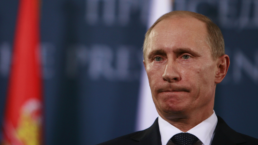Despite rosy predictions from Western think-tankers, a Russian power vacuum would not be something to celebrate.
by Branko Marcetic, Responsible Statecraft
In 1998, in the midst of a years-long U.S. campaign to topple Iraqi dictator Saddam Hussein, Gen. Anthony Zinni realized the United States had no actual plan for what would happen in the aftermath. Zinni filled this gap by commissioning a series of war games, which predicted that a post-Saddam Iraq would be plunged into bloody chaos. The analysis, largely ignored at the time, would prove prophetic in the ensuing years.
This is worth recalling now, after long-standing hopes that the Ukraine invasion would spell the end of Vladimir Putin’s rule were nudged closer to reality over the weekend, with Wagner Group leader Yevgeny Prigozhin carrying out a mutiny against the Russian president. The episode brings up several questions: What exactly is America’s plan should the Russian state collapse? What would follow a post-Putin power vacuum? And what measures should the United States take to manage its relationship with the country in such a scenario?

We can get some sense of the foreign policy establishment’s thinking on the subject by looking at what influential think tanks have had to say.
Take the Center for a New American Security, an arms-manufacturer-funded think tank closely aligned with the Democratic Party and from which the Biden administration has drawn many of its top foreign policy appointees. Shortly before Prigozhin’s coup attempt, Andrea Kendall-Taylor, director of its Transatlantic Security Program, co-wrote a piece outlining several scenarios for a post-Putin Russia, drawing heavily on her testimony in a Senate hearing in May.
Recent Posts
‘Unconstitutional. Unethical. Authoritarian.’ ICE Bars Millions Of Immigrants From Bond Hearings
July 18, 2025
Take Action Now One watchdog said the new policy “seems like a blatant attempt to stop them from exercising their right to due process.”……
Americans Are Not Nearly Alarmed Enough About Climate Change
July 18, 2025
Take Action Now Americans still don’t comprehend how imminent, dangerous, and far-reaching the threat is—and journalists are partly to blame.By…
The IRS Is Building A Vast System To Share Millions Of Taxpayers’ Data With ICE
July 17, 2025
Take Action Now ProPublica has obtained the blueprint for the Trump administration’s unprecedented plan to turn over IRS records to Homeland Security…
Israel’s Sudden Assault On Syria Is Unchecked Aggression
July 17, 2025
Take Action Now Jerusalem is bombing Damascus and threatening al-Sharaa’s rule, while Washington was hoping to help the nascent government on…




